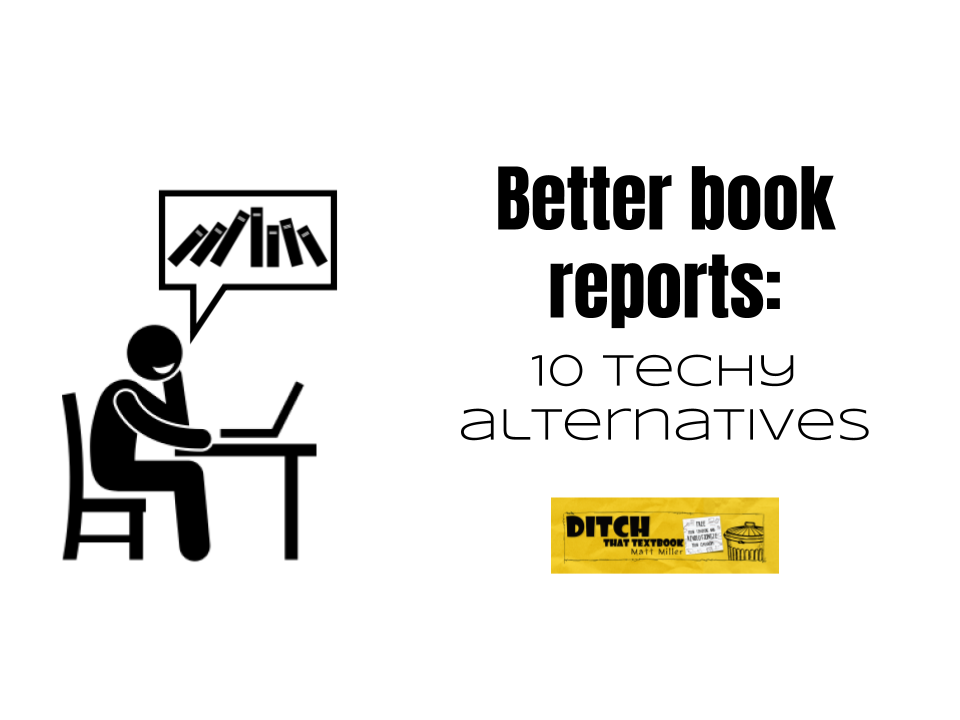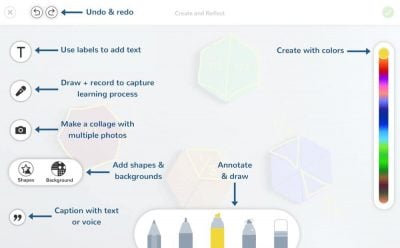

Book reports don’t have to be a drag! Use your Chromebooks, laptops or mobile devices to give them a creative twist.
Books are amazing. They transport students to a different time and place. They boost vocabulary and improve achievement.
Book reports, however, can be a drag. They can suck the fun out of reading. They can turn it into a chore.
There has to be a better way, right?
Use technology to your advantage! Here are some ways to use free tools across the web to make book reports a more fun — and still very effective — experience:
The format for a talk show on TV or the radio is a great set-up for what we want students doing with their books. We want them to talk about what they know, what they believe, how they feel and what they want to do in the future. Thankfully, recording video is a breeze with the devices students use in the classroom. A simple webcam video — or video using the camera on a cell phone or mobile device — will do the trick! Use tools like Flipgrid, Screencastify, DoInk Green Screen, Adobe Spark Video, or iMovie.
Resources:
Imagine having a bulletin board where students could post their favorite parts of a book and have a discussion. With a shared Wakelet collection, you can create the digital version of this. Students can post text, videos, links to articles and book reviews, and more in a Wakelet collection. Think of it as a big digital hangout where they can talk about a book.
Resources:
Seesaw’s creative canvas is like a big sketchbook. You open it up to a blank page. You can write on it. You can stick pictures and shapes and backgrounds to it. The record feature is like taking your sketchbook to someone else and saying, “Can I show you what I’m working on?” — and then capturing it. Students can take images from the book — even images of pages with important passages — and talk about them in a recording.

Seesaw’s creative canvas lets students capture their learning visually and share it with the class. (Image courtesy of Seesaw. Click for full-size image.)
Resources:
For your students who love to doodle and draw, this may be a great option. Let them mix text and visuals together in a sketchnote, a method of visual notetaking. Students can draw images to go along with short snippets of text. They can draw a chart or scene and label it. Anything they want to share gets a visual with it. When they’re done, they have a page loaded with verbal/visual goodness to share with others! Below is a sketch summary I did to list the hooks from the book Teach Like a PIRATE.
Resources:
Infographics are another visually-rich creation that lets students show what they know. If students aren’t as excited about doodling and drawing, making an infographic can have the same benefits with less demands for artistic talent. Students can pull in photos, icons, graphics and other visuals to pair with text. Again, snippets of text paired with a visual is great. Tools like Google Drawings, Adobe Spark Post and Canva can really make these work.
Snap pics of your books. Put some fun graphics on them. Then share them with others. That’s the heart of Booksnaps, a fun twist on the Snapchat craze — that doesn’t even require the use of Snapchat in class! It’s an idea inspired by using Snapchat by educator Tara Martin. Take a photo of a page of a book. Add text, images and more. It’s a fun way to get students talking about what they’re reading.
Resources:
What if students talked about a book WITH THE AUTHOR instead of just with each other? If the author of a book students are reading is still alive, it never hurts to send him/her a message to see about a quick video call with your students. The worst thing the author can say is no — or never respond. And the best thing the author can say is yes! Doing a video call on Skype, Google Hangouts or others is pretty easy, especially with some of the resources below.
Let students explore what could have happened in a book! Have them create a Choose Your Own Adventure-style story where they recall what happened in the story AND create several alternate endings if characters had made different choices. Use the step-by-step tutorial post below to guide you.
Web design used to be a specialized skill with coding and required training. Now, with a tool like Adobe Spark Page, you can create a well designed webpage with stunning visuals and clean text. Students can capture their best ideas in Spark Page and communicate them to others visually.
Comics are fun! They’re visual. They tell a story. And, in these Google Slides comics, students can be the stars of the story — along with the stories they’re talking about. Use Google Slides to add text, images and more to create a comic. Each slide of the slide presentation can be a different page in a comic book. Students can use this medium to retell what happened in a book, add their own commentary and more. (Note: the post below uses Google Drawings to create one single comic strip. By using Google Slides to do the same thing, you can create multiple pages — more like a comic book.)
I love this take on rethinking book reports by educator Ann Kozma! Here’s a link to slides for her presentation, “Bye Bye Boring Book Reports,” at the CUE BOLD Conference.
For notifications of new Ditch That Textbook content and helpful links:
Interested in having Matt present at your event or school? Contact him by e-mail!
Matt is scheduled to present at the following upcoming events:
[getnoticed-event-table scope=”upcoming” max=”15″ expanding=”false”]

Session expired
Please log in again. The login page will open in a new tab. After logging in you can close it and return to this page.
[…] Students don't have to report on their reading through essays or — worse! — the traditional reading log! Check out these ideas for book reports. Click here to read more! […]